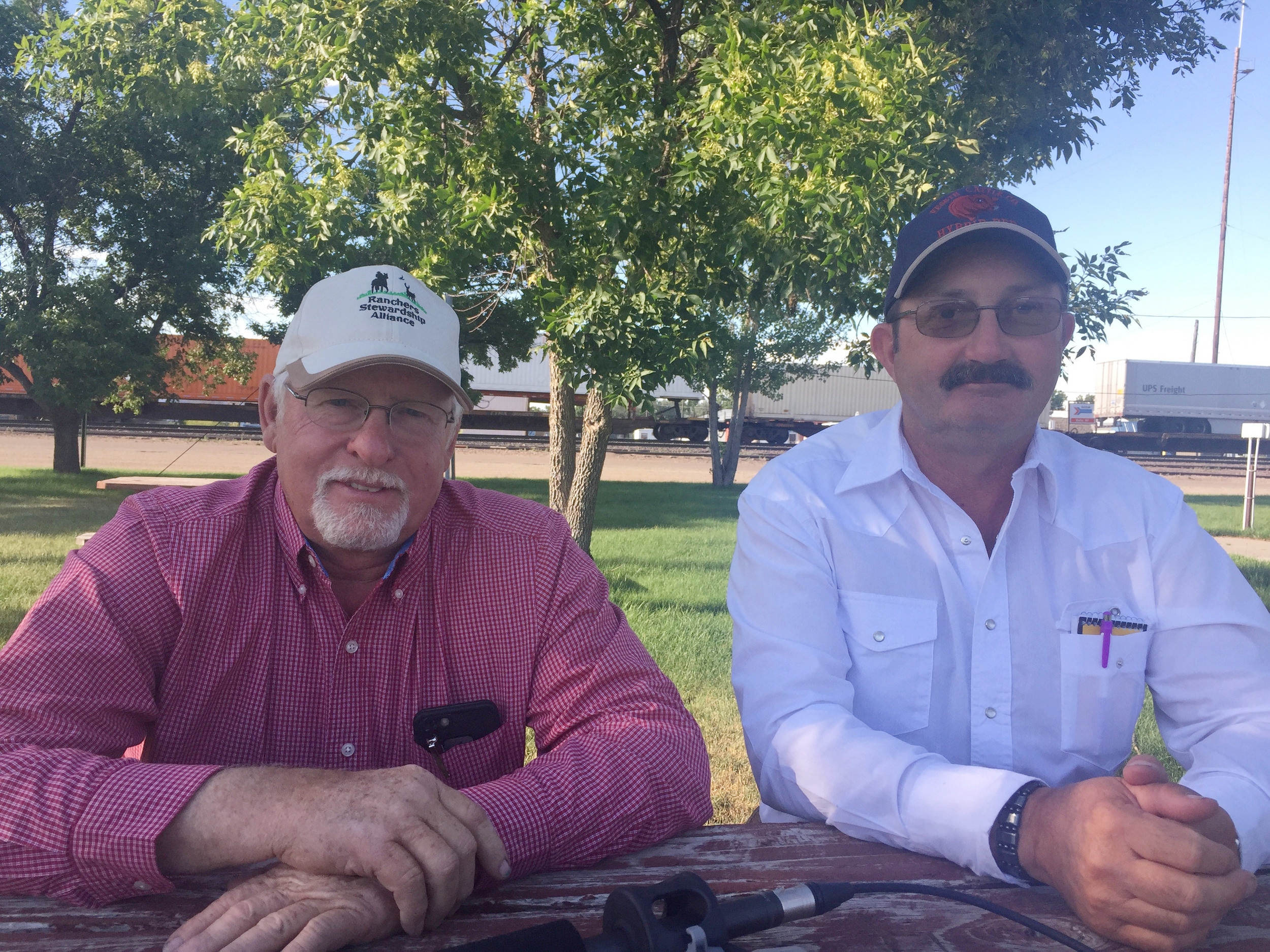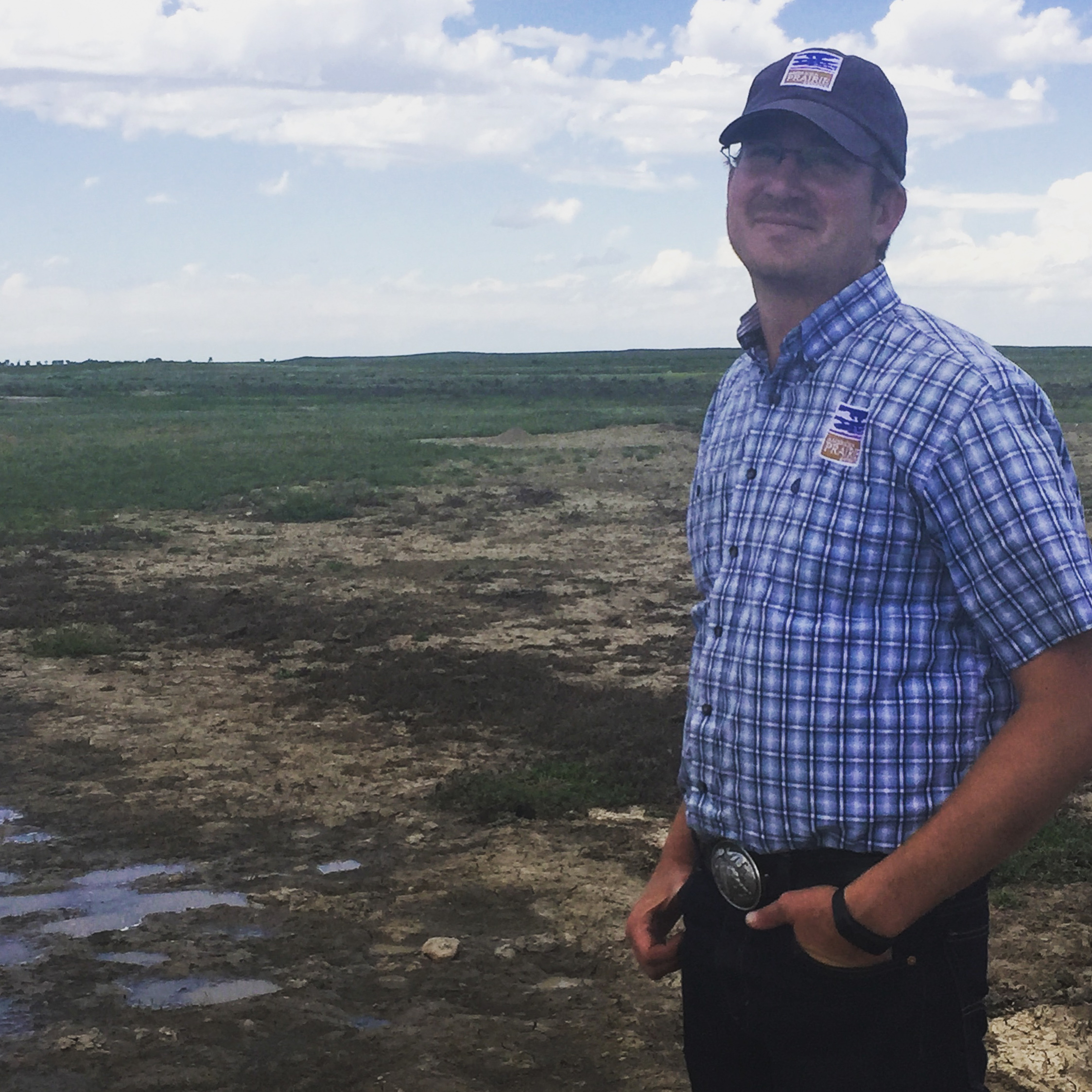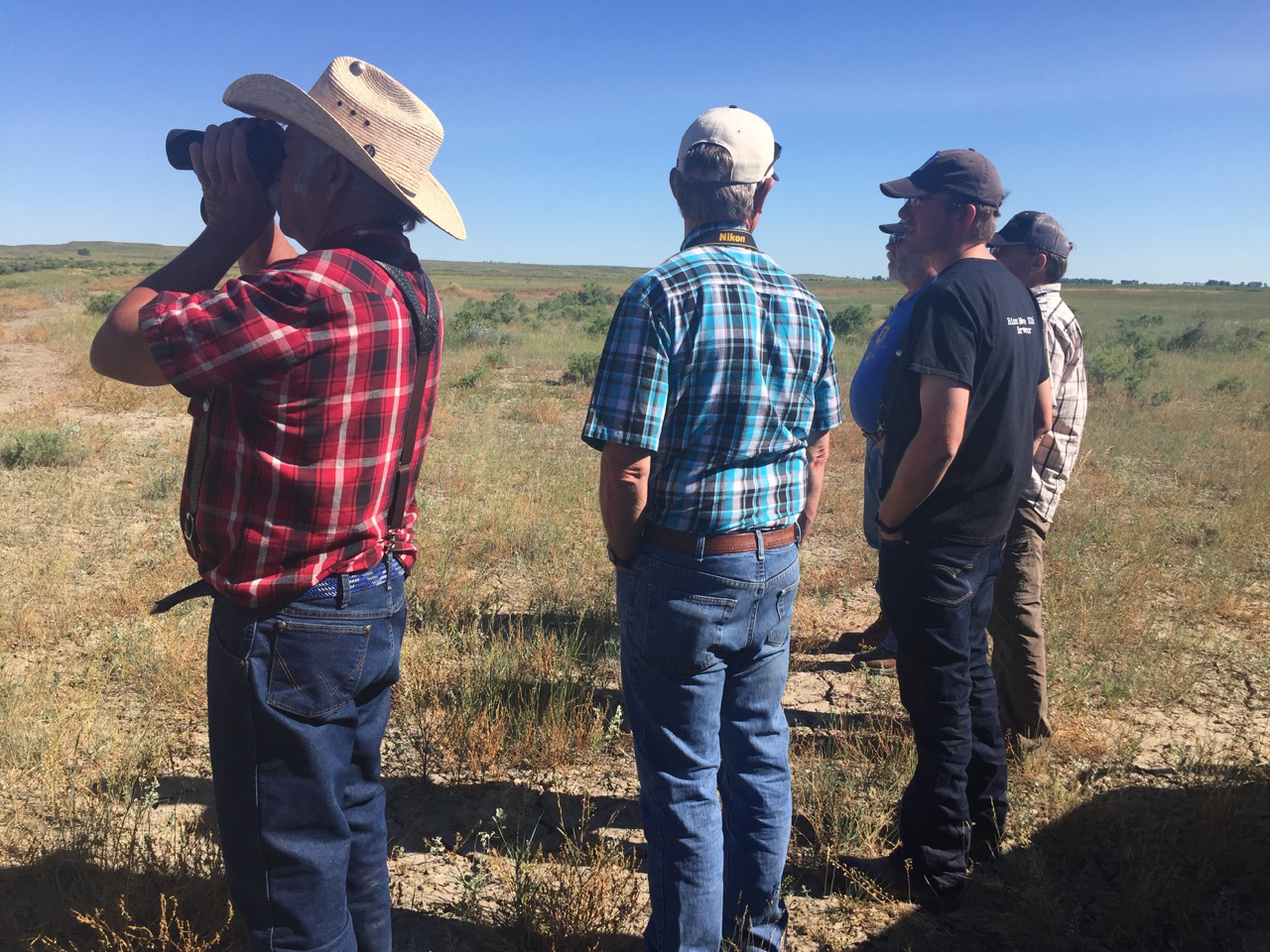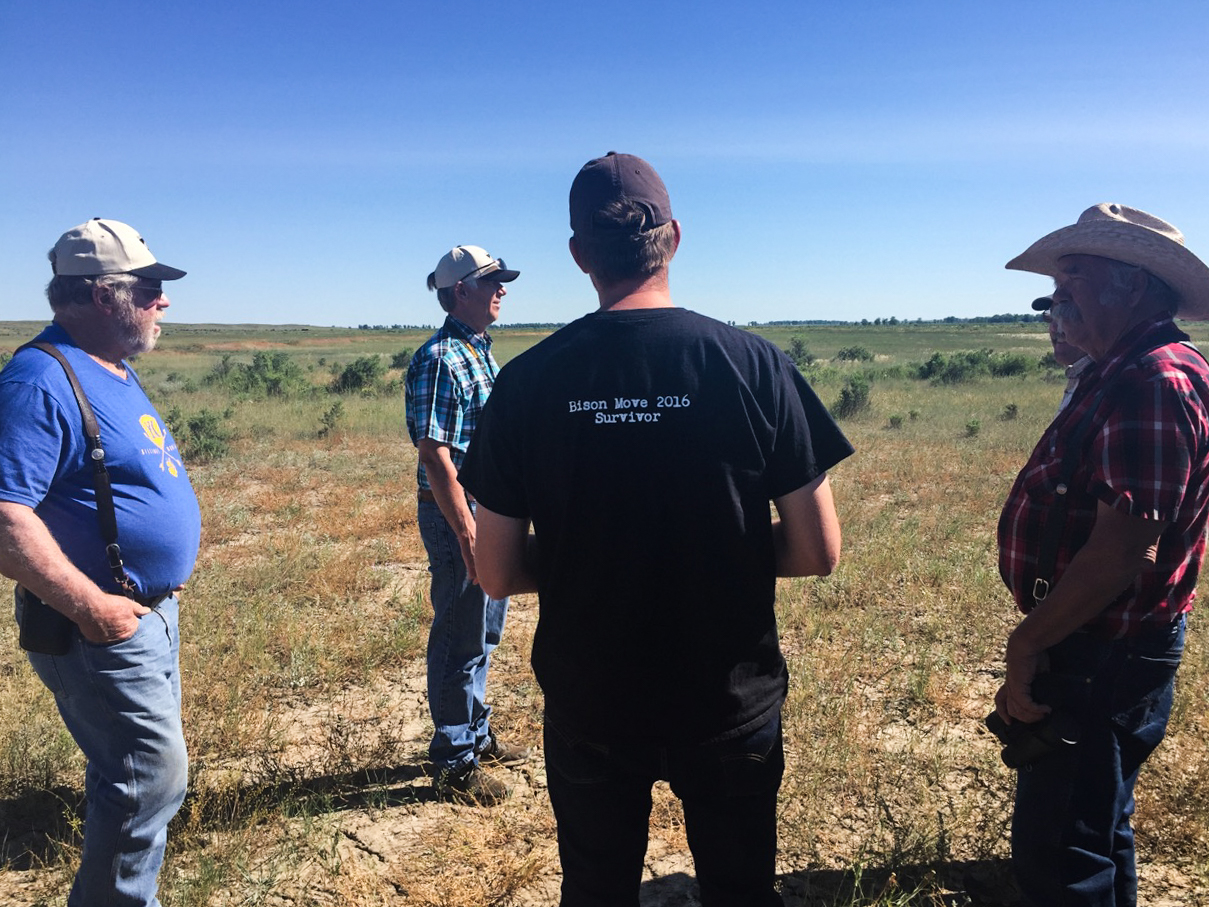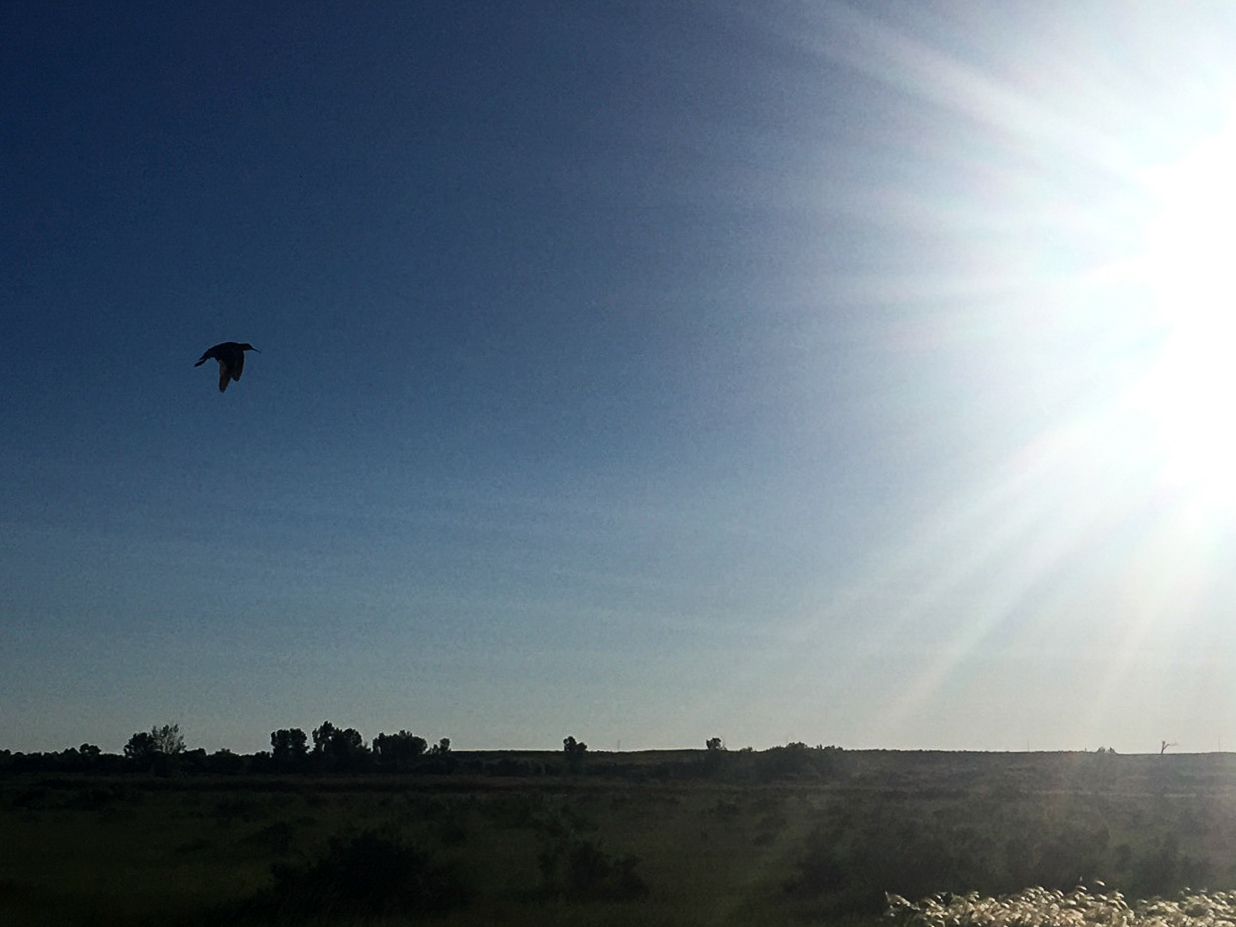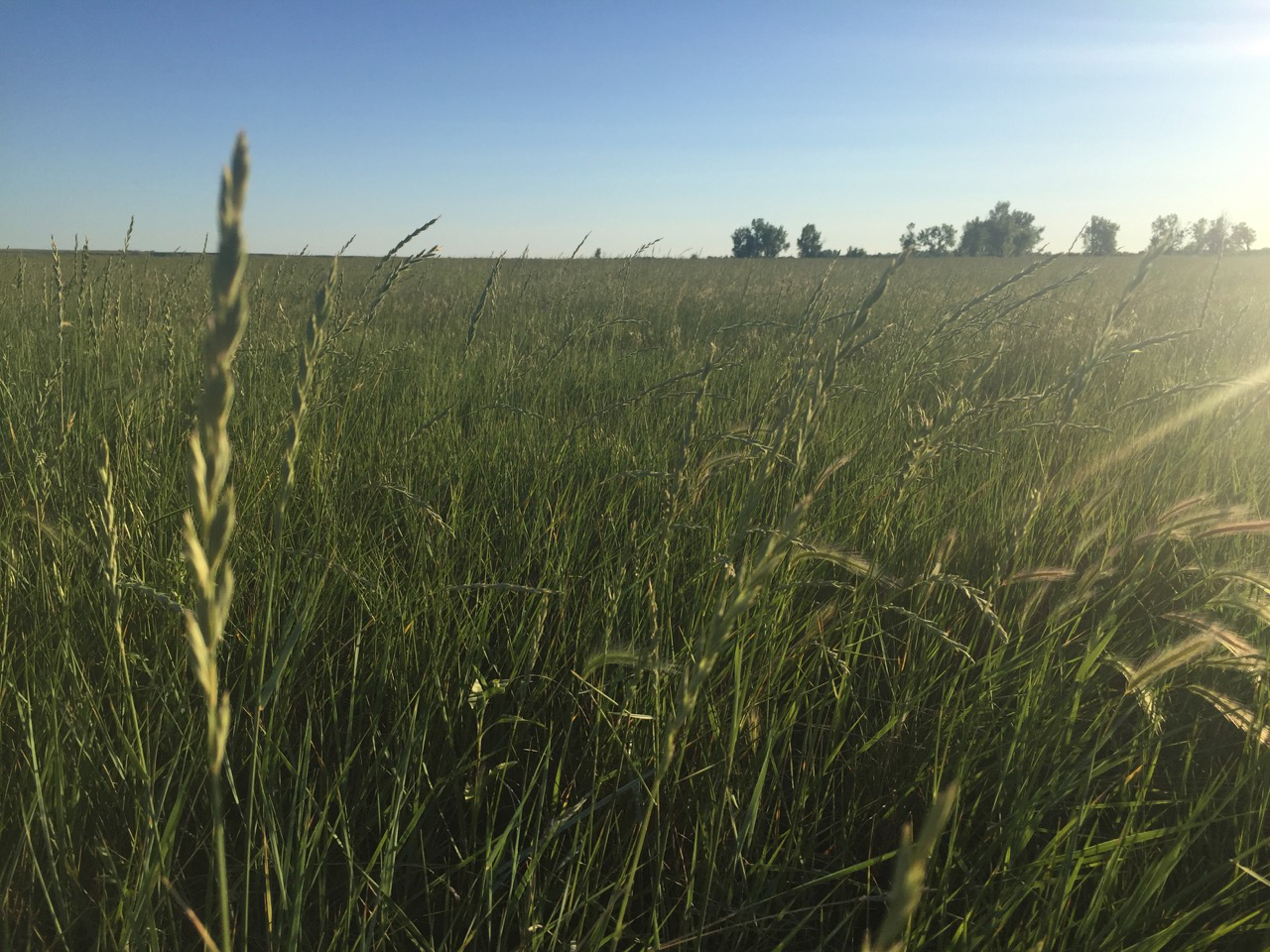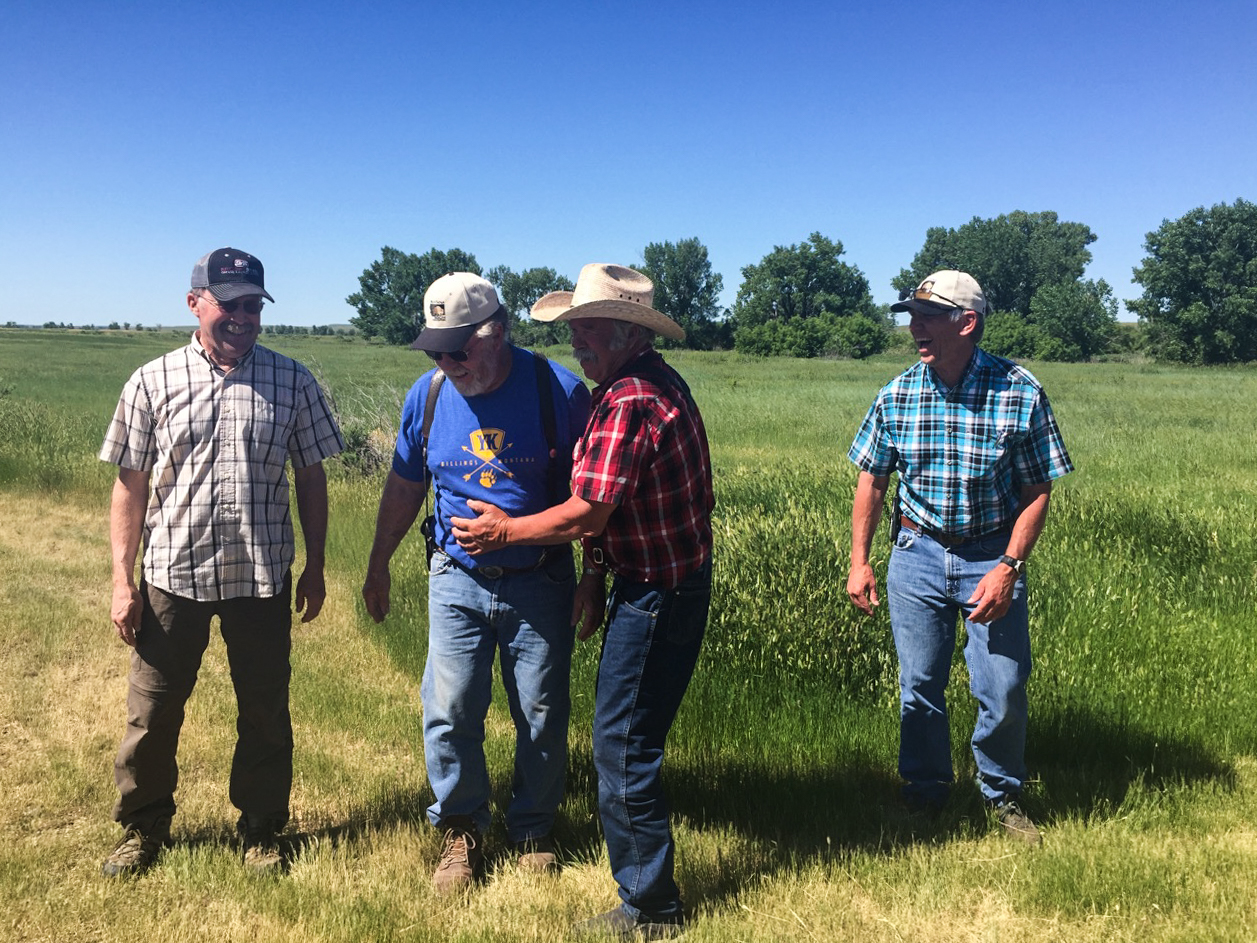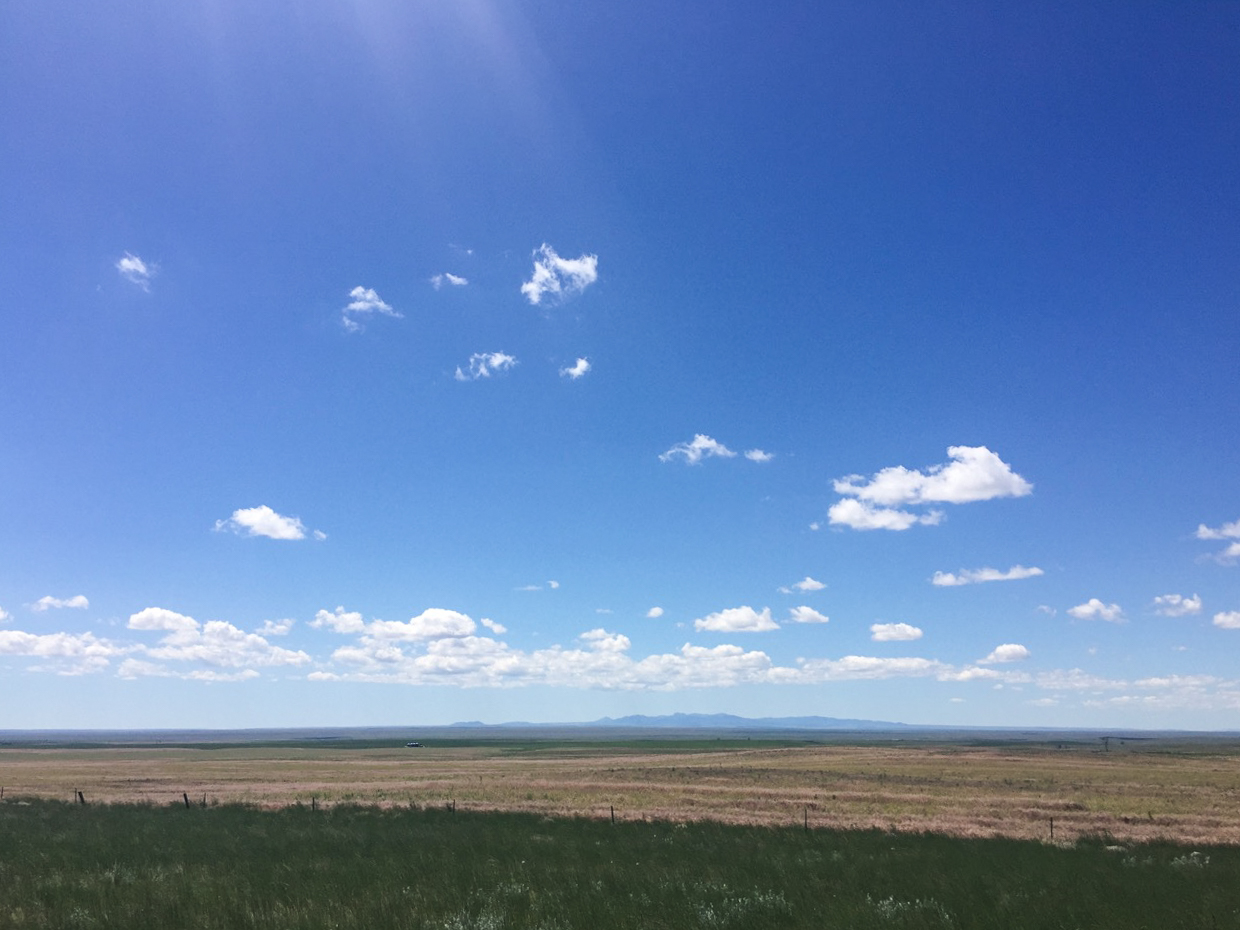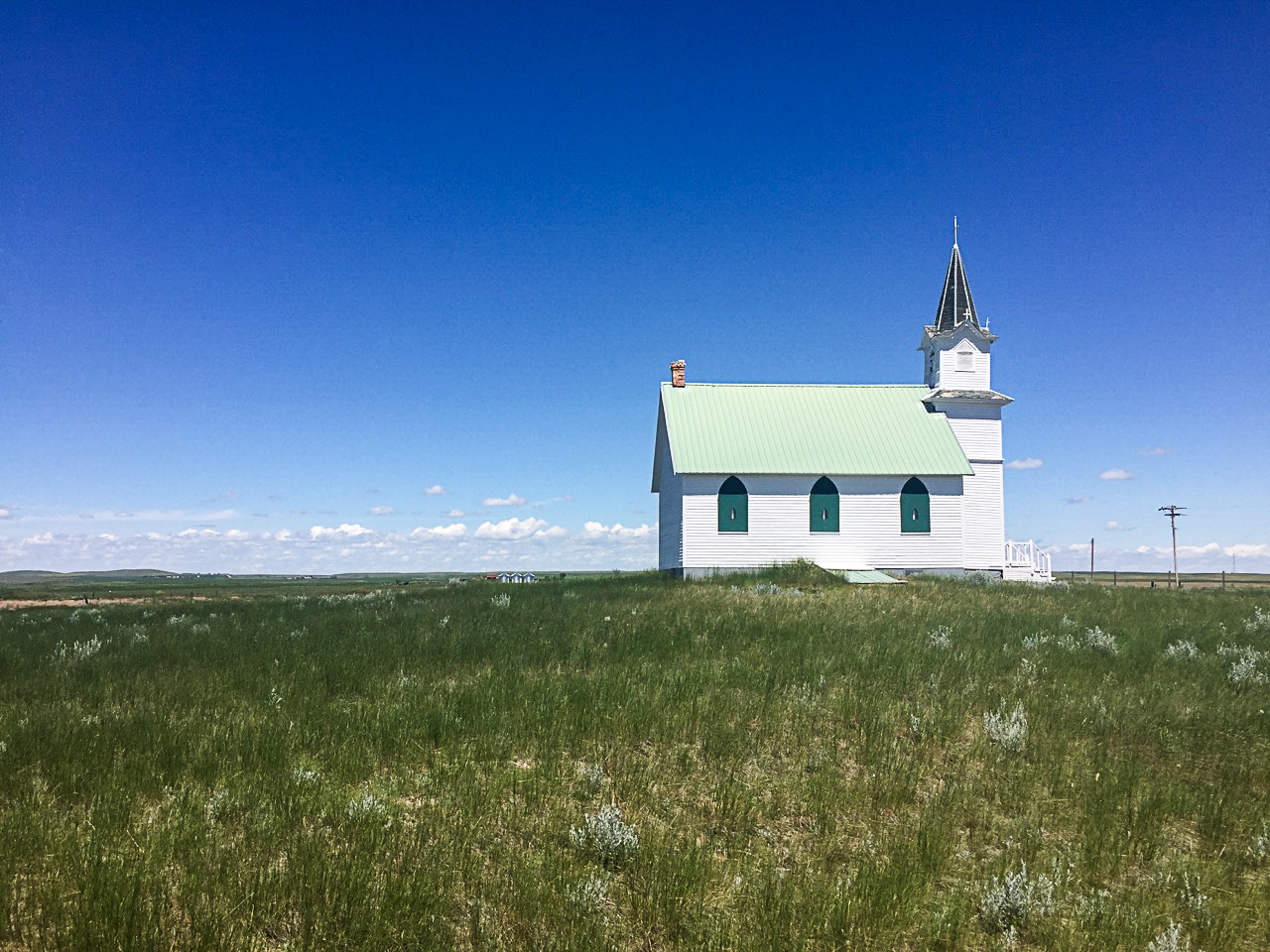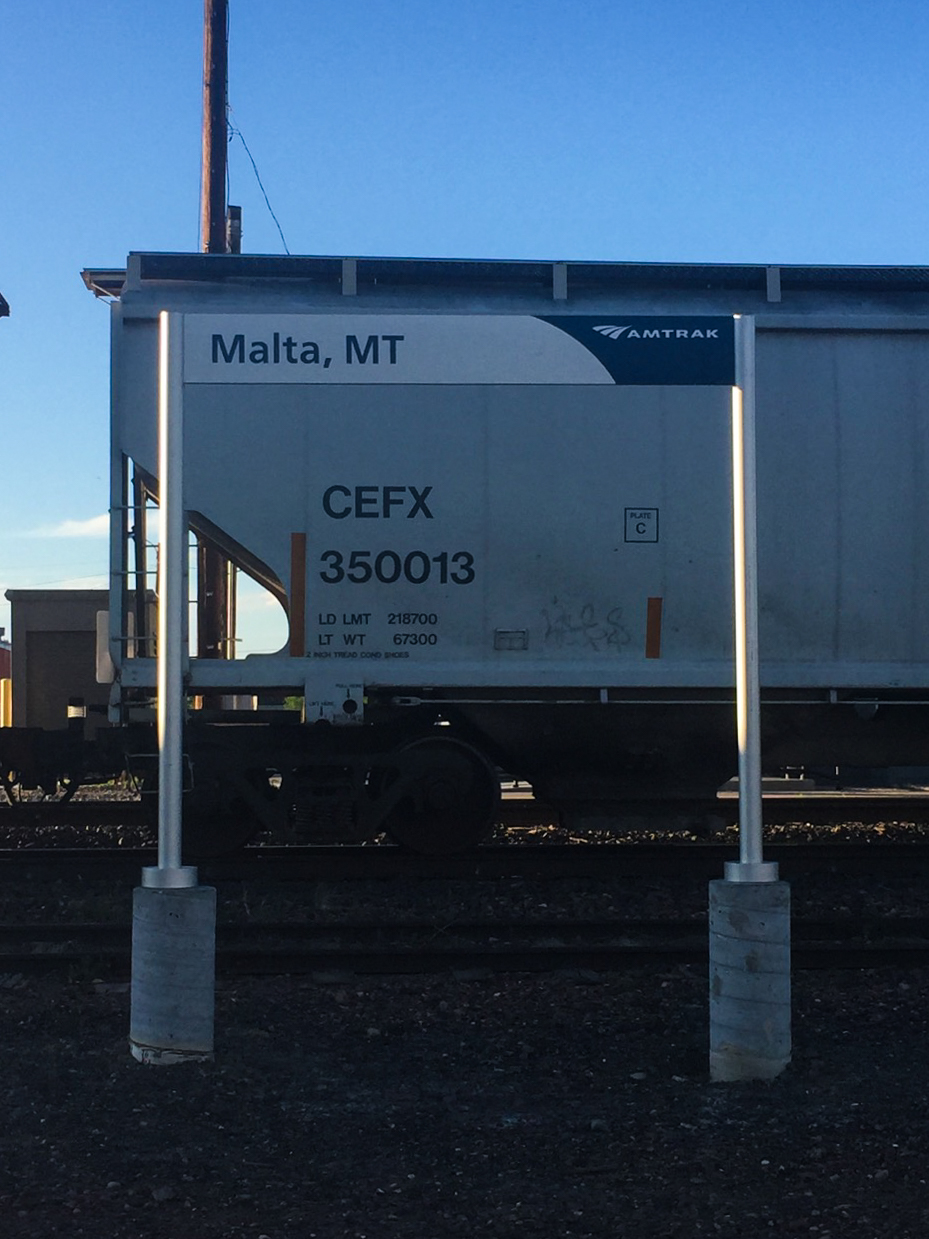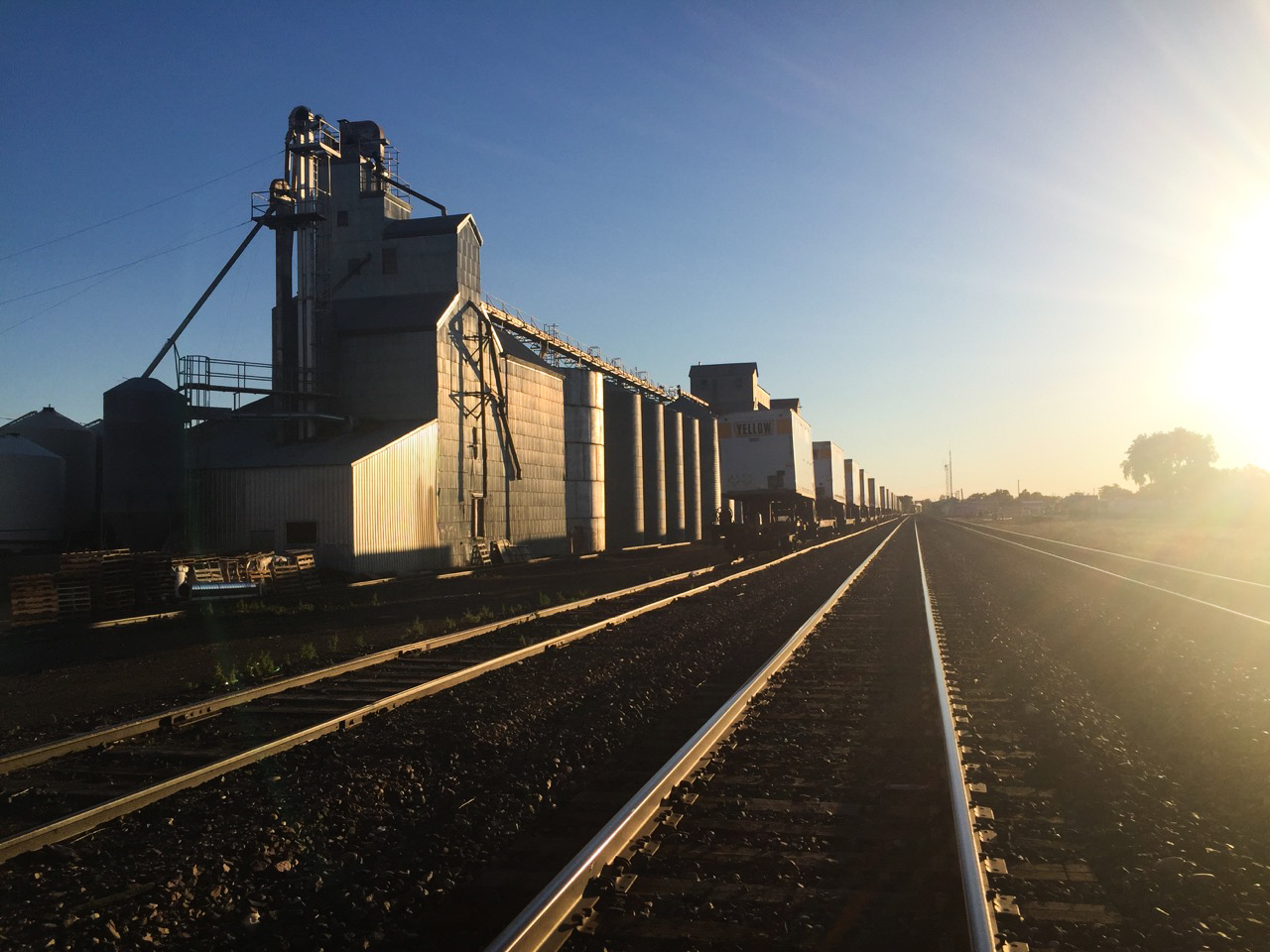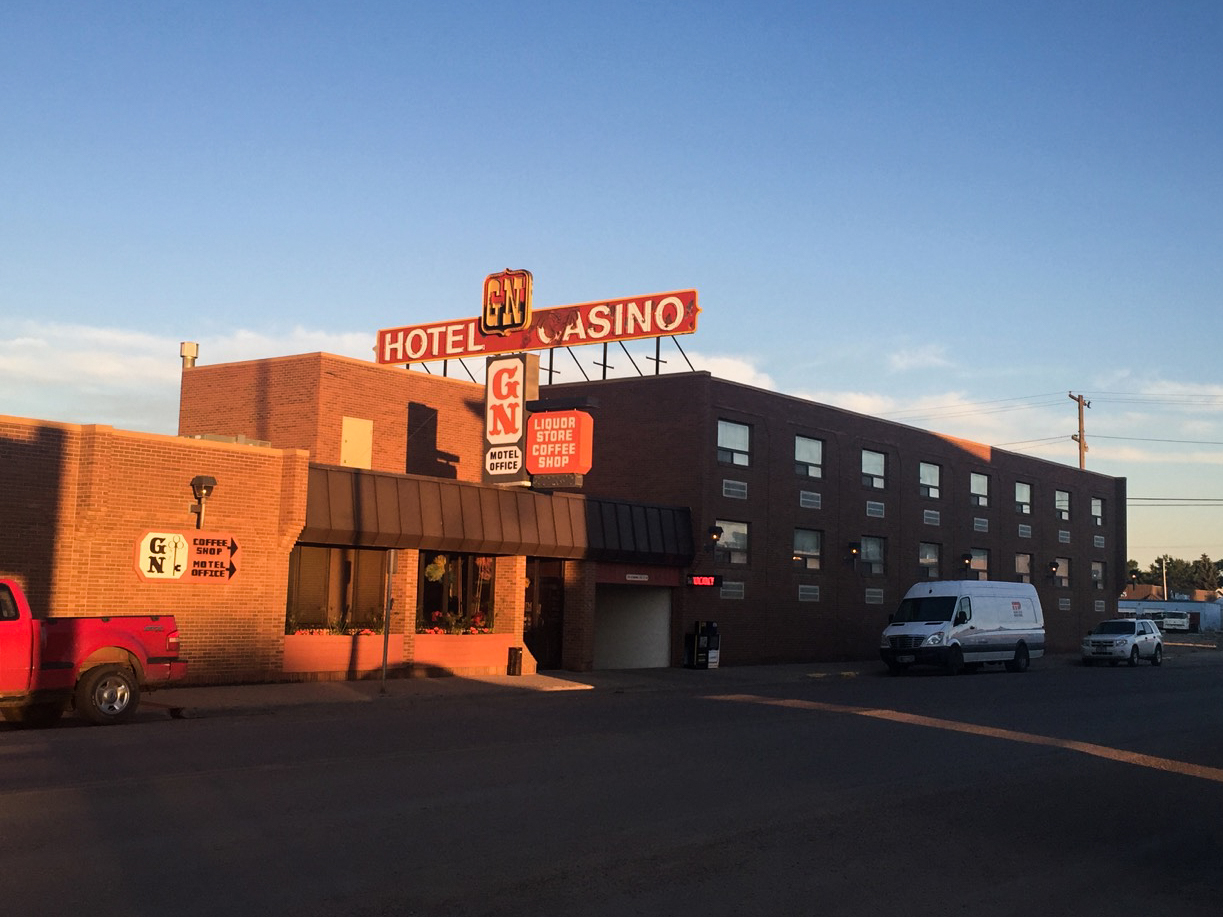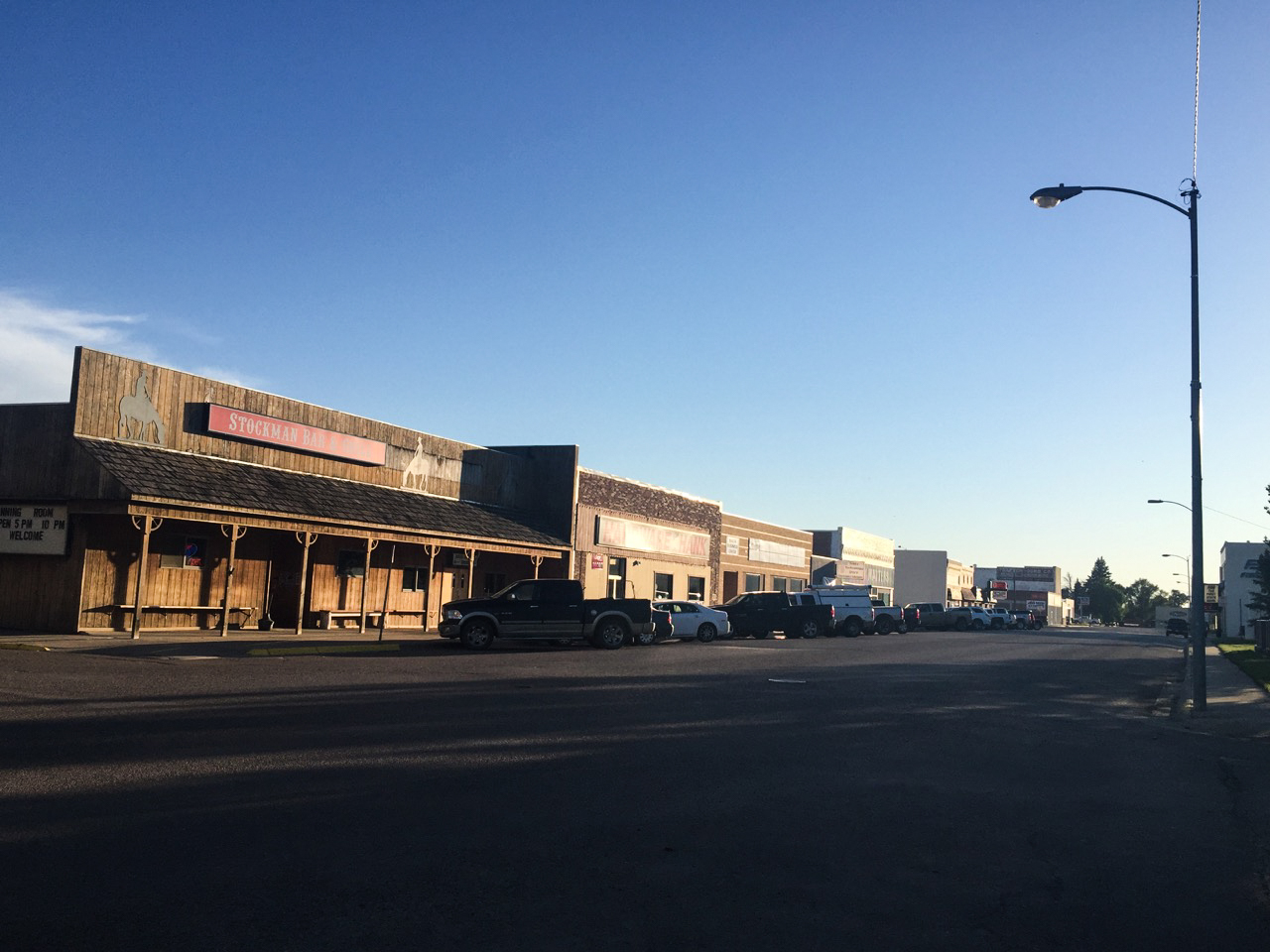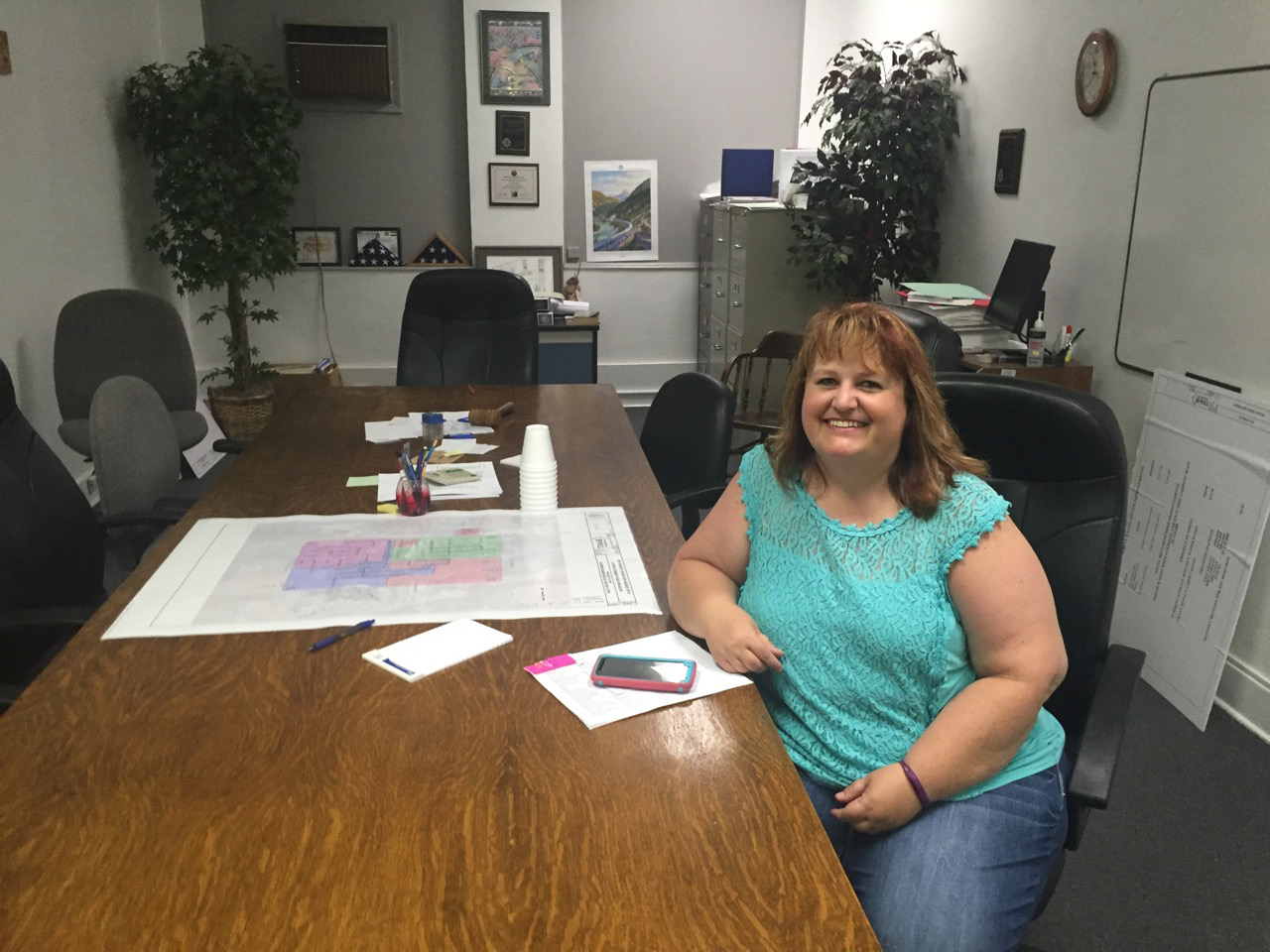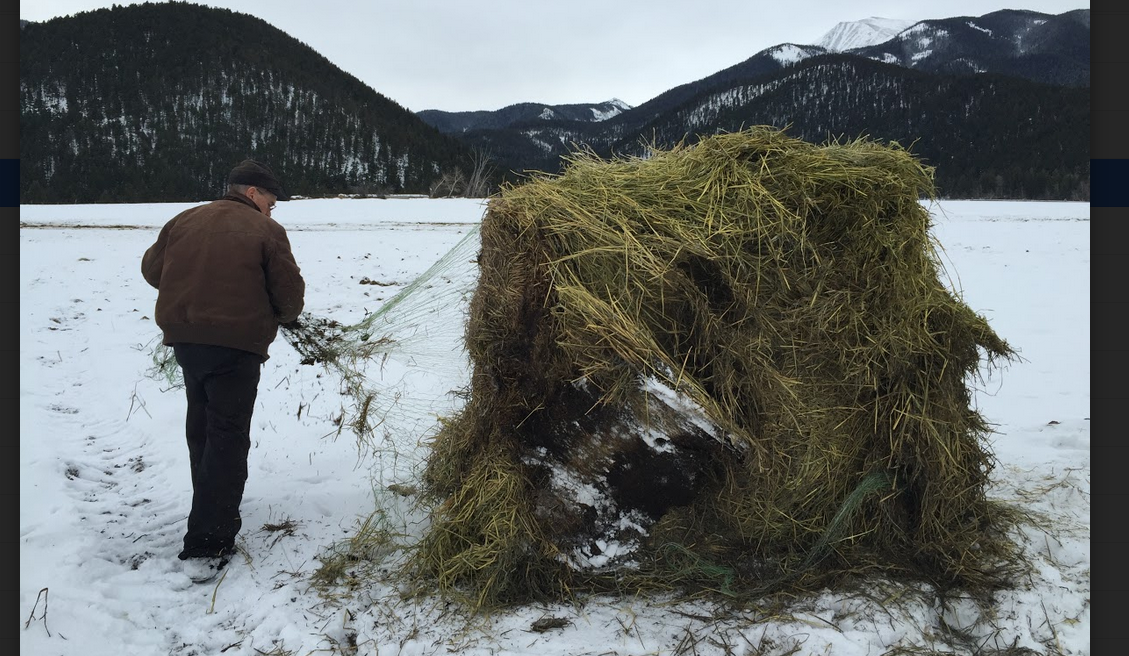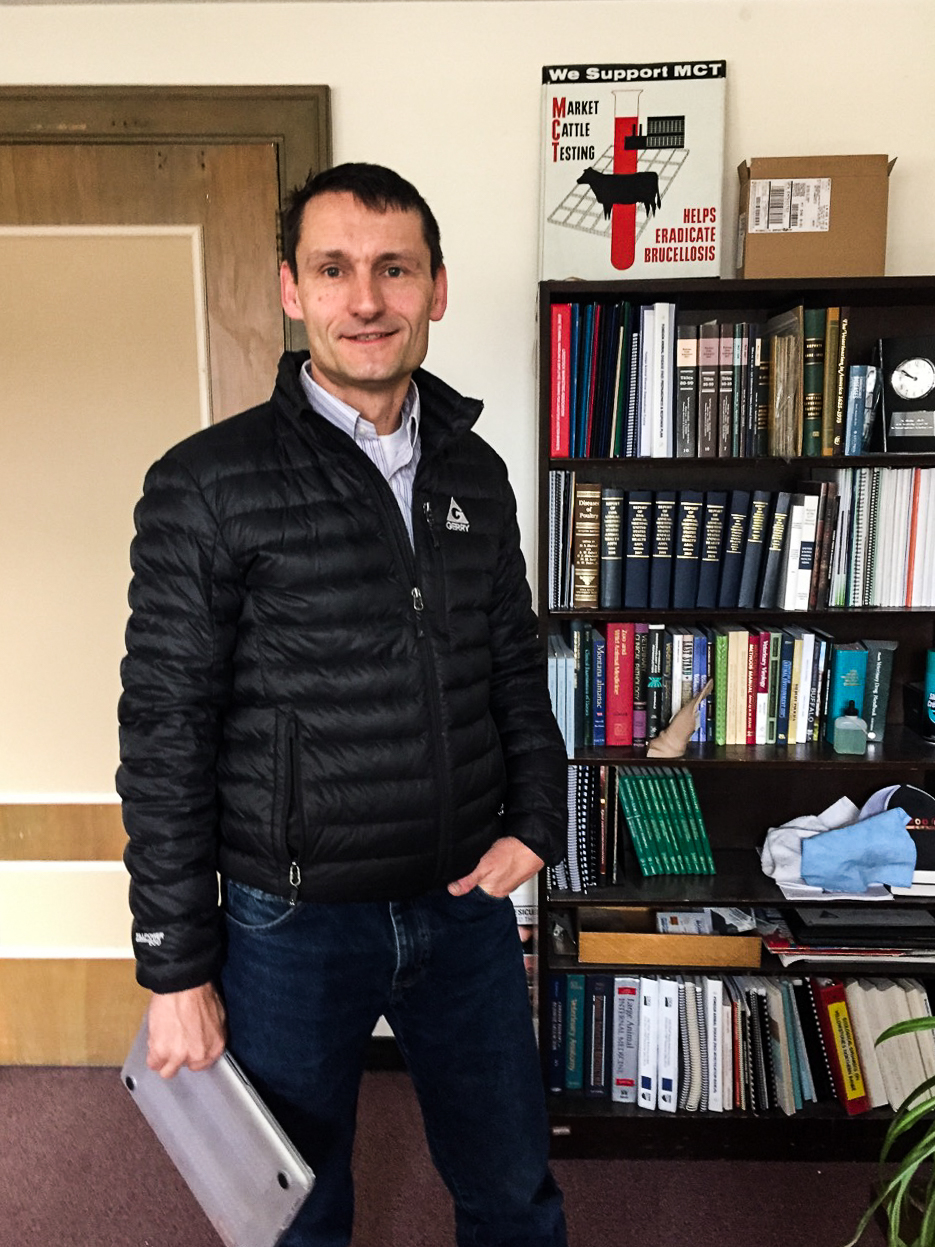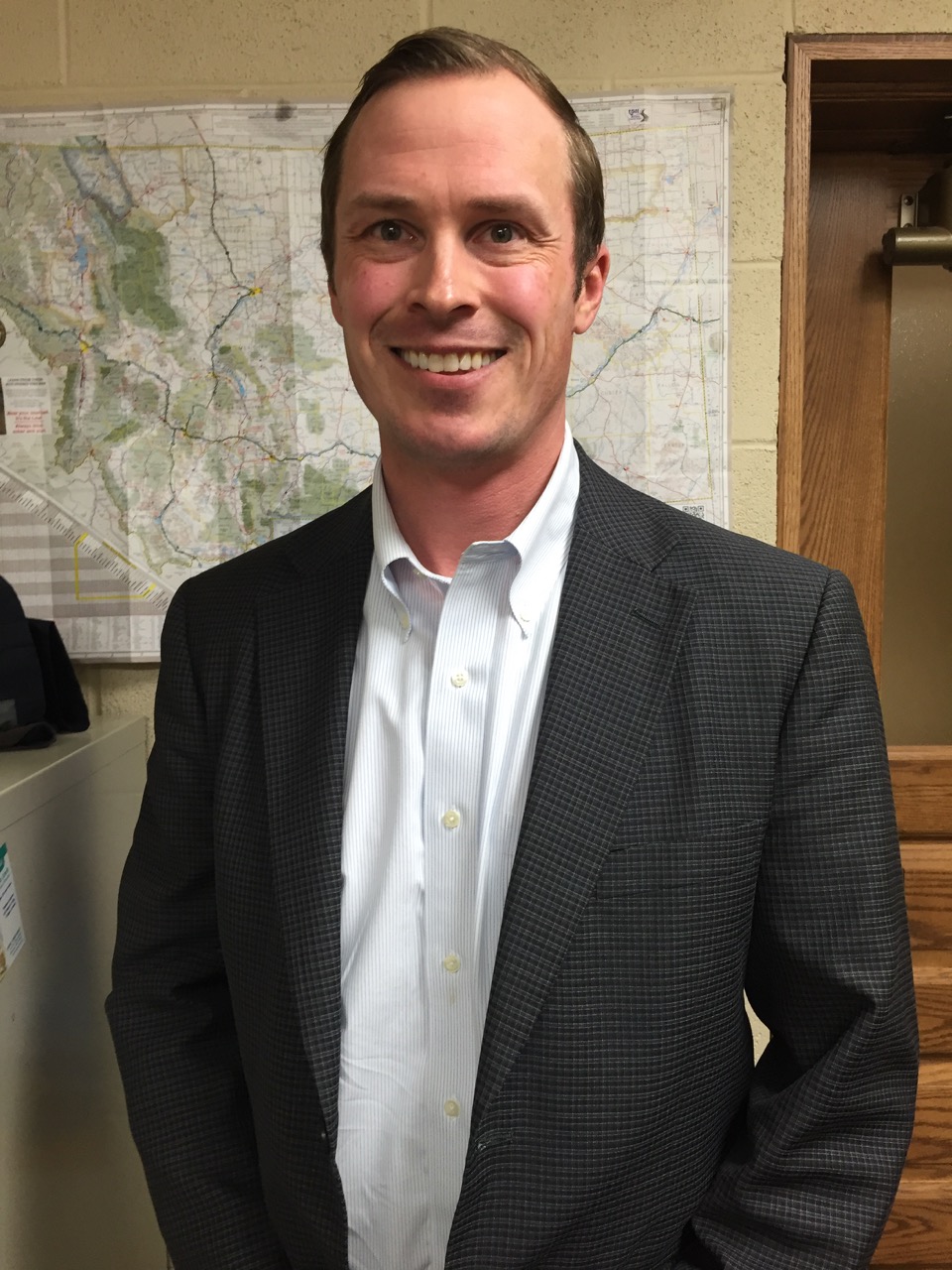Season 1: Episode 6
Territory Folks Should All Be Pals
In this episode, we travel to the American Prairie Reserve—a conservation project in the heart of Montana that could eventually be home to 10,000 bison. The vision is to stitch together 3.5 million acres of public and private lands to form the largest wildlife park in the lower 48. But some nearby ranchers feel the push to build the APR is pushing them off their land, and they're mounting a resistance.
We also try to solve the Great Elk Mystery: why are elk that have been exposed to brucellosis allowed to roam free in Montana, while bison are not?
Read More
Phillips County, Montana
It's roughly the size of Connecticut (a little bigger, actually). The population of Connecticut is 3.6 million. The population of Phillips County is around 4,000.
But low population density isn't the same thing as no people. There are many ranches, a handful of small towns, and a Hutterite colony in the county. Malta is the county seat, and has around 2,000 people.
Most people in the county are connected to agriculture in some way. Learn more about the rancher-led conservation projects discussed in this episode:
American Prairie Reserve
The APR website has a wealth of information about their plans, including this map.
Yellowstone Bison Survey
In this episode, we asked for your input on how to manage the Yellowstone bison. Click here to take the survey.
The Farmer and The Cowman Should Be Friends
The farmer and the cowman should be friends. Oh, the farmer and the cowman should be friends. One man likes to push a plow, the other likes to chase a cow, but that's no reason why they can't be friends.
Territory folks should stick together, territory folks should all be pals. Cowboys dance with farmer's daughters, farmers dance with the ranchers' gals.
Credits
Threshold is produced by me, Amy Martin, with help from Jackson Barnett, Zoe Rom, Nora Saks, Nick Mott, and Josh Burnham. Music—other than “the farmer and the cowman should be friends”—is by Travis Yost.
Transcript
[00:00] INTRODUCTION
AMY: Welcome to Threshold, I’m Amy Martin, and for the last 18 months of bison reporting I’ve had this song looping in my head. Two songs, actually. “Home on the Range,” and this one.
MUSIC
The farmer and the cow man should be friends
Oh, the farmer and the cow man should be friends …
AMY: That’s from the musical Oklahoma!, and I’m going to warn you right now – it’s diabolically catchy. You’ve got the farmers on one side, advocating for keeping cattle contained:
MUSIC
I’d like to say a word for the farmer... (fade)
He come out west and made a lot of changes...
AMY: And the cowboys who wanted the freedom to move cattle across the country...
MUSIC
He come out west and built a lotta fences…
and built ‘em right across our cattle ranges.
AMY: I think this song kept popping into my head because it’s about people fighting over different ways of managing animals on the land. They were trying to decide if they were willing to put aside their differences for the greater good – achieving statehood.
MUSIC
Cowboys dance with the farmers’ daughters
Farmers dance with the ranchers’ gals…
AMY: As I sang this endlessly to myself on long drives across Montana, I was struck by who’s welcome at this dance and who’s not. I mean, no one’s singing about farmer’s daughters dancing with anyone from the many Indian tribes all around. And of course, bison are a non-entity. This is a conflict between white people about cows. It’s kind of like, now that we’ve killed off the buffalo and confined Native Americans to reservations, let’s all try to get along.
MUSIC
Territory folks should stick together
Territory folks should all be pals
Cowboys dance with the farmers’ daughters
Farmers dance with the ranchers’ gals…
AMY: Even so, I still love the bridge-building enthusiasm here. And in this episode of Threshold, we’re going to visit a place that could use a little bit of that energy – the American Prairie Reserve, a huge park in the making in the heart of Montana. This place could become the largest wildlife preserve in the lower 48 – home to 10,000 bison someday. To some, this is a bold, inspiring vision. To others, it feels like an existential threat.
MUSIC
AMY: And we’re also going to dig into the question of why elk that have been exposed to brucellosis are allowed to roam free, while bison are not. And despite rumors to the contrary – rumors started by me, in episode 5 – this is not in fact the last episode of this first season of Threshold. We added one more show. Bison, I can’t quit you.
MUSIC: THRESHOLD THEME
“You’ve got blood all over the snow. It was hard.”
“Everybody has this big dream that you can free roam and it’s going to be so good for everybody. It’s not.”
“Bison are not allowed to go beyond a certain point and if they do they are hazed or sent to slaughter.”
“The National Park Service doesn’t want to send bison to slaughter and we don’t want to be in the business of handling wildlife in this way.”
“Buffalo have taken care of Native Americans since the beginning of time.”
“Maybe they don’t even understand agriculture.”
[02:55] SEGMENT A
AMY: When I say the world wilderness, what do you think of? The Rocky Mountains? The Grand Canyon? In the U.S., wilderness has become associated with extreme verticality – a place that wows us with its dramatic highs and lows. It’s hard to remember that flatland states like Ohio and Illinois were once wild and dangerous places, home to wolves and bears and cougars, crisscrossed by enormous flocks of birds, exploding with wildflowers and a cornucopia of hearty grasses.
DAMIEN: America has built some amazing national parks. But we tend to focus on sheer stunning rock and ice. We kind of forgot about the grasslands.
AMY: This is Damien Austin, reserve supervisor for the American Prairie Reserve. He’s giving me a tour of a horizontal wilderness – one that pulls your gaze out rather than up. As we bump along in his pickup truck, I’m looking at mile after mile of rolling grassland extending out to the horizon in every direction. And above us, the sky is so huge that we can see whole families of clouds migrating across it.
AMY: Just looking out across this amazing landscape right now, I mean, has any of this ever been plowed?
DAMIEN: Where we're at now. No it hasn’t, no.
AMY: Ever?
DAMIEN: No, ever.
AMY: This region, in north-central Montana, is one of the last remnants of what was once a great inland sea of grass. More than a million square miles of prairie used to stretch from Indiana to the Rockies, and from southern Canada to northern Mexico.
DAMIEN: That's one of the reasons we're working on this project is that, ah, in our project area there's about 90 to 95 percent of the land has never been plowed. So it's, it's intact prairie. All of the plant species are there.
AMY: An unplowed, undeveloped acre of grassland is a very rare find, not only in the United States, but around the globe.
DAMIEN: Across the entire world it's a critically threatened habitat. Temperate grasslands are one of the least protected ecotypes. And then right now there's only four places left in the entire world of those temperate grasslands where you can actually piece something back together that could be ecologically functioning. So we're sitting in one of them, that's the northern glaciated plains in North America. The other one’s Patagonia, and then the Mongolian steppe, and the Kazakhstan steppe. Those are the only four places left in the world.
AMY: This idea of an ecologically functioning prairie is at the heart of the vision here. Grasslands evolved on a grand scale, and many of the species that call them home, most notably bison, need a lot of space to be what they are and fulfill their role in the system. We’ve preserved some small pieces of the prairie but we have virtually no intact prairie ecosystems left that are operating on a scale that allows all the relationships between the plants and the animals to play out naturally. That’s what the American Prairie Reserve is trying to do.
DAMIEN: The ultimate vision is three-and-a-half million acres. And that would include the Charles M. Russell National Wildlife Refuge and the Upper Missouri River Breaks National Monument.
AMY: These are two oblong pieces of public land hugging the banks of the Missouri River. Together, they add up to almost one-and-a-half million acres.
DAMIEN: So we're using those two huge protected areas as anchor and building on that.
AMY: The APR is buying up pieces of the surrounding private land, and putting it into conservation. Their model is a public-private partnership – they’re trying to turn what is now a patchwork of private, federal, and state land into one cohesive conservation area with a lot of public access. They say their goal is to buy 500,000 acres and lease another 1.5 million. Right now, they own around 86,000 acres, and lease 266,000.
DAMIEN: With the temperate grassland being under protected we’re in desperate need of building this reserve while it’s still left.
AMY: To give you a sense of how big three-and-a-half million acres really is, here are some comparisons: Yellowstone is about 2.2 million acres, and Yosemite, in California, is about 760,000. Among the national parks of the lower 48, only Death Valley comes close to the size that APR is aiming for. And Damien says a big landscape like this is crucial if we want to keep bison wild.
DAMIEN: For the most part, the conservation herds of bison across the entire continent on average number less than 400. And I mean 400 is the bare minimum for genetic resistance to losing those traits. So we need a lot more and a lot bigger herds.
AMY: In our tour of the American Prairie Reserve, I saw active prairie dog towns, lots and lots of birds, pronghorn, deer, and, in a distance, some of the APR’s 700-some bison. But the best part of my time there was when he cut me loose to go exploring on my own. I spent the night there in my tent and woke up excited to experience the prairie on foot.
AMY: It’s about 5:30 in the morning, and I just woke up in my tent and one of the first things I heard was a big coyote chorus.
SOUND: Birds chirping, footsteps
AMY: I’m just gonna walk out here for a little ways and see...see what I can hear…
SOUND: Footsteps
AMY: The sun just came over the horizon. And the just-past-full moon is huge. Still up in the western sky going down. I can see a prairie dog....(laugh) they’re pretty funny how they stand straight up on their hind legs, taking in the sunrise…
AMY: I was all alone, walking through one of the very few grasslands left on the planet that is not completely dominated by humans. And, like people have been doing for more than 75,000 years, I came around a bend and saw something that made me stop in my tracks.
AMY: I see buffalo way up there. Probably a mile-and-a-half, two miles away…
SOUND: Crickets chirping
AMY: I’m just going to sit here and try and record the quiet for a minute. Checking for snakes…
SOUND: Crickets chirping. Bird cawing
AMY: I just heard bison grunting...from way across the prairie. I can’t believe how well that carried.....prairie in the morning.
AMY: I grew up on the prairie – some of my best memories from my childhood are of wandering around our Iowa farm, often deep in a Laura Ingalls Wilder fantasy. But our farm was 80 acres, and most of that was devoted to corn and alfalfa. There’s no possibility of experiencing the prairie at anything close to this scale in the Midwest. Everything has been divided up and tamed. Not so, at the APR.
AMY: There's lots of kind of sharp little plants. Ground is dry, and yeah...it's tough. You can tell everything that lives out here has to be tough.
LEO: You know, there's lots of people come here and think it's neat. They don’t last very long.
AMY: This is Leo Barthelmess, a rancher who lives close to the American Prairie Reserve. His land is in the APR acquisition zone and he is not happy about it.
LEO: They don't care about us. They have their vision. They're going to have 10,000 bison and three million acres, and we're just a small obstacle to be brushed aside to achieve their vision.
AMY: Leo raises cattle and sheep and also harvests native grass seeds to be used for reclamation. I’m talking to him in a park in Malta, Montana, a town of about 2,000 people that serves as the commercial hub of this area. And with us is another local rancher, Dale Veseth.
DALE: My name is Dale Veseth and I’m a rancher. My family’s ranched in south Phillips County since 1888. And I guess it’s the only thing I’ve ever really wanted to do. I’ve had other opportunities and I’ve always been drawn back to the land.
AMY: Dale is in his mid-50s, Leo’s a few years older. They both wore button-down shirts, caps, and jeans – Dale described it to me as the rancher uniform. He also told me that he really had no desire to be interviewed.
DALE: I’m an introvert. I’m in the most introverted three percent of the population. I'm real happy with my cows and my grass. That's what I want to do. I actually don't mind looking at little birds either, I throw some birds in there and do, do ranch stuff...and I...I have no interest in getting on the radio, getting in the TV, getting on the front page of the newspaper. Don’t have any interest.
AMY: But Dale and Leo feel like they have to speak out against the APR’s vision, which they say disregards a key component of this landscape: them.
LEO: Well, we're part of this system as much as any culture that's ever lived here. I mean, this land has chosen us to stay here.
AMY: This is Leo Barthelmess again.
LEO: The people that are in great glaciated plains were chosen to live here by the land itself. We're supposed to be here.
AMY: You’re adapted to the land.
LEO: We’re adapted to the land, very well put, yeah, we're adapted to the land.
AMY: Leo and Dale say local ranchers are already doing a lot to preserve wildlife habitat in this area. They’re both part of the Ranchers Stewardship Alliance, a local group that works with the Nature Conservancy, the World Wildlife Fund, and other organizations.
DALE: There's the sage grouse initiative that's out there, improving habitat for sage grouse. We just went to an easement meeting – how to preserve more grassland. Where we aren't doing a good job we have professionals helping us. It's cutting edge.
LEO: U.S. Fish and Wildlife Service, Fish Wildlife and Parks, Ducks Unlimited. We work with lots of conservation groups. Montana Stockgrowers, Montana Woolgrowers. This is about a community of people building a better place. A sustainable place.
AMY: Dale believes these kinds of projects are more practical than APR’s approach because they’re cheaper and they can happen faster. And he says he’s frustrated that rancher-led conservation tends to go unnoticed.
DALE: They told us in nonprofits, they call it sexy. The projects that were really sexy tanked up the money.
AMY: He was telling you you're not sexy enough?
DALE: Evidently, yeah. (laughs)
AMY: Joking aside, I think Dale’s pointing to an important point here: this isn’t so much a fight over whether or not to do conservation, it’s a fight about how to do it.
DALE: Just being an old Norwegian rancher, I'm going, why can't we make things more efficient and sustainable within our own system.
MUSIC
AMY: Leo and Dale want to do conservation work from within a ranching paradigm – smaller-scale projects that don’t cost millions of dollars, but can make a big difference when you stitch them together and maintain them over time. The APR is coming with a different paradigm. They’re looking at the whole planet, and seeing that this is one of the only places in the world where it’s still possible to preserve the prairie on a scale that can’t happen within the agricultural model. So there is a substantive difference here – a true disagreement about what we should be aiming for.
MUSIC
AMY: But layered on top of that disagreement is an enormous culture clash between the APR leadership and people like Leo and Dale. According to Bloomberg News, billionaires like Forrest Mars and Susan Packard Orr are on the APR donor list, and Sean Gerrity, the president of the APR, made a lot of money as a co-founder of a Silicon Valley consulting firm. These people are operating in an entirely different sphere than the people of Malta, Montana. To Dale and Leo, the idea of these rich city people coming in and telling them how to “save” their land is as ridiculous as them showing up in Silicon Valley to tell them how to run a tech company. And it’s not just Dale and Leo. Many people I talked to in Malta said they felt insulted and condescended to. And also, threatened.
LEO: We want to stay. We live here, we have a great community and you know, they’re not a part of that community. We’re just something to be swept away.
AMY: So I felt like, it's kind of coming from on high –
LEO: Absolutely. No different than the U.S. cavalry coming.
HILARY: We work on a willing buyer, willing seller model.
AMY: This is Hilary Parker, she’s the communications manager for the APR.
HILARY: If someone wants to stay on that land, fantastic. We want them to stay on that land and continue ranching or living or whatnot. If they do want to sell and they want to sell to their neighbor – fantastic. If they want to sell to us, well, we think that's great too.
AMY: Hilary says the APR isn’t anti-ranching – in fact, they run their own wildlife-friendly cattle ranch, called Wild Sky Beef. But at the end of the day, the APR wants to make a home for wildlife that includes some ranching. Leo and Dale want to run ranches that include some wildlife. And not all wildlife.
AMY: What do you guys think about bison, and about the possibility of this area being part of helping to restore this species?
LEO: They don’t need to be restored. They’re not endangered.
AMY: This is not an inspiring thought to you.
LEO: No.
AMY: But, some things Leo said made me wonder if he’s not quite as black and white about some of this stuff as he sounds. Later in our interview, he said that he had gone with his family to see the APR’s bison herd.
LEO: ...drove all the way back around just to see the bison. I enjoyed seeing the bison.
AMY: And, when I asked him if his goal was to kick the APR out of his community this was his response.
LEO: Oh no. I actually enjoy the employees of APR. I just don't like the APR vision. They have some good people working out there. They're passionate about their work. Because we don't agree? Well, that's fine.
AMY: Comments like this made me wonder if there might be more common ground here than initially meets the eye. It’s actually really hard to sort out how much of this fight is about style, and how much is about substance. And as I listened to Damien, Leo, and Dale, I kept wondering what might happen if they got together and had a conversation that started with the recognition that they all believe this place is very special.
LEO: The rural community in Malta is so small that every member whether you agree with them or not are of value. When the APR had their fire a couple of years ago I was the first one there. Me and my neighbor, Bim Oxart, were the first one there. Doesn't matter that you don't like them. You're not going to let that happen to somebody, to get burnt out. So you're there to help. If you find him stuck in a ditch you pull him out. I mean no matter who they are that's just the culture of Phillips County. You take care of your own because they're Phillips County.
DALE: And you’ll need that help.
AMY: “You’ll need that help,” Dale said.
DALE: You'll have the fire, or be stuck.
AMY: That’s just so lost in our country right now, I feel like. That sense that you can disagree with someone passionately and you can still be kind to them, you know?
LEO: Oh, you can still go have a beer, we just won’t talk about the election. (laughs)
MUSIC
Territory folks should stick together
Territory folks should all be pals
Cowboys dance with the farmers’ daughters
Farmers dance with the ranchers’ gals …
AMY: You can find pictures of Dale, Leo and Damien on our website and we’ll bring you more of the story in some extras, too. But right now, it’s time to move on to the elephant in the room here. Or the elk in the room, rather. We’ll have more after this short break.
Break
[19:12] SEGMENT B
AMY: Welcome back to Threshold, I’m Amy Martin, and a few episodes ago I told you we would investigate the great elk mystery. Quick refresher: some portion of both elk and bison in the Yellowstone area have been exposed to brucellosis – they originally got the disease from domestic livestock, and now both animals are capable of passing it back to cattle, although so far, only elk have done so in the wild. So the question is – why are elk allowed to roam free in Montana, while bison are not?
ALAN: We've got a problem with both species. Overpopulated, overgrazing.
AMY: This is Alan Redfield, he’s a rancher and representative in the Montana state legislature. And he says we should reduce the number of elk on the landscape as well as significantly reducing the size of the Yellowstone bison herd.
ALAN: Reduce that population. If they say it’s 5,000 it should be 2,000.
AMY: I think the closest Alan came to answer this question about the difference in management practices was something he said as we climbed up into his tractor ---
ALAN: When this ranch was started...you know you didn’t have to worry about Yellowstone bison. There was none left!
ZALUSKI: Yeah I guess. I would probably say that there's less tolerance for bison than there are elk.
AMY: This is Martin Zaluski, Montana’s State Veterinarian, working within the Montana Department of Livestock.
ZALUSKI: If a rancher will see elk on occasion on the same property that he has cattle, or on his on his ranch those ranchers understand typically that that's just part of western living. That same recognition or acceptance probably isn't there for bison.
AMY: Why isn't living with bison just part of western living?
ZALUSKI: Because it hasn't, because we haven't seen bison in the state of Montana as far as a wild range since the 1900s. And so I think people are not accustomed to having those animals around that's a large part of it.
AMY: What I hear in this is that we’re treating bison and elk differently because we’ve always treated bison and elk differently. That may indeed explain some of the habits and expectations of one group of people here, but science is supposed to drive our wildlife management policies. So, I asked again, what is the science behind this difference in how we’re managing these two animals that both carry brucellosis?
ZALUSKI: I think that’s a question you’d have to ask the legislature. You know that the legislature felt that bison were a significant enough issue that they charged the department of livestock with that disease control authority for those animals.
AMY: Well, I already talked to one legislator, and I’ll bring you thoughts from another one later, but I’m gonna cut to chase here and say – there does not appear to be a scientific reason for this inconsistency. I asked dozens of people about this. I read papers and journal articles, I listened in on meetings. I seriously tried to track down a scientific answer to this question. And I don’t think there is one. I think the answer is what Alan Redfield said – when this ranch was started, we didn’t have to worry about bison, there were none left. We’re using the absence of bison as a justification for continuing to keep them off the land. This is circular reasoning. But, to be fair, it’s also completely human nature. We all do this. Whatever frame of reference we’ve gotten used to just feels like the right one. Like the way things are supposed to be. But if that’s why we’re doing things this way, we should say so. But we’re not. What we’re saying is we don’t more bison on the landscape because of brucellosis. Another person I talked to about this was Errol Rice of the Montana Stockgrowers Association, a group with a lot of influence over bison policies in the Yellowstone area.
AMY: If bison are such a concern, or if brucellosis is such a concern, why aren't the stock growers, you know, advocating for the similar management of elk?
ERROL: When you start talking about a test and removal protocol with elk, I mean, there's a lot of other stakeholders involved. There's a lot of people in the wildlife community and the sporting community that...that's a nonstarter.
AMY: These other stakeholders that Errol is referring to are the more than 100,000 people who hunt elk in Montana every year, many of whom are ranchers themselves. These hunters and other wildlife advocates make up a vocal interest group for elk who bring a lot of money into the state every year. So, what this comes down to is treating elk the way we treat bison absolutely would not fly in Montana. And what Errol is saying is that the Stockgrowers Association recognizes this. So they’ve decided elk with brucellosis are just something they have to deal with. Whereas with bison, it’s presented as a looming crisis. And when I tried to press Errol on that inconsistency, his response was that the ranching community’s perspective deserves respect.
ERROL: A lot of these families came here, you know, three, four, five generations ago when no one else wanted to be here. And within that I think is a real cultural institution of understanding what it takes to be on the landscape understanding what it takes to keep these ecosystems intact. And so i think that that, you know, puts the ranching community in a position where their point of view deserves some respect with regards to resource management, with regards to disease management, and I think that's really where we're coming from.
AMY: Just to go back to what you said about the families coming here when no one else wanted to be here, I do have to point out that there were a lot of families here that wanted to be here that were dependent on the bison. That were put onto reservations or otherwise killed off. What do you say to the native American families who feel that connection to place – for them bison is part of why they ever were able to be here and so it feels like...how can you say that this other animal that was brought here, and gave the bison this disease that is so problematic now gets to completely rule the show? And this animal that we depended on for thousands and thousands of years, doesn't have much of a place. I just want to hear your thoughts on that.
ERROL: Well I mean certainly we respect the…You know the historical context of the bison in the native American population in Montana. And absolutely their point of view deserves absolute respect and, you know, I think that their point of view in terms of historical rights to hunt bison within the GYA is something that has been done and should continue to happen
AMY: I believe that Errol meant no disrespect. But I also think his comment points to the crux of the issue here. Many people start their western story in the late 1800s, after the bison had been nearly wiped out, and Native Americans were mostly confined to reservations. For lots of people that’s the baseline that everything else gets compared to. But the problem with that, is that the end of the 19th century was a really odd time. It was the first time in hundreds of thousands of years that this landscape had not been held and been shaped by massive bison herds and the people who coexisted with them. So using that little window in our history as the norm, or the guide for the future seems like an ill-fated approach. It’s no different, really, than trying to say the country should be just like it was 500 years ago, or 5,000 years ago. The question isn’t which period in history are we going to try to cling to. The question is – what do we want the future to look like?
MIKE: Restoration is liberating. We can do this.
AMY: This is Montana State Senator Mike Phillips, and he’s also the executive director of the Turner Endangered Species Fund.
MIKE: Montanans have to rise up and tell a governor to go do this. It's the right thing to do. It will at the end of the day advance Montana's prospects mightily.
AMY: And it will advance Montana’s prospects because it will attract more people here to view them?
MIKE: Let’s assume nobody comes. It advances our prospects because it shows that we have humility and the capacity to accommodate wild things in wild places that we recognize that we have this tremendous opportunity – that is a responsibility -- to shepherd this place to steward this pace, to leave it a bit more intact than we found it.
AMY: The conceit of this whole series is asking this question is – can America ever have wild free-roaming bison again?
MIKE: Yes. Yeah, yeah, unequivocally yes.
AMY: Montana is one of the states where it’s possible to conceive of this happening. But it’s not the only one. And finding a solution to the Yellowstone conundrum is something we’re all responsible for as well – those animals are held in trust for all Americans. As we prepare to release this episode, more than 700 of them have been captured for slaughter so far this winter, and more than 400 have been taken in the hunt at the park boundary. And it’s not over. It looks like around 1400 Yellowstone bison will die this year, even though there are tribes and other groups around the country who would love to have them. We still don’t know why there’s been no decision made about using the quarantine facility at Fort Peck, and the process of writing a new Interagency Bison Management Plan seems to be stalled out as well. This process appears to be broken and the bison are the ones bearing the cost.
MUSIC
AMY: Maybe, it’s time for some new thinking here. Tell us how you think the Yellowstone bison should be managed. Take our survey at thresholdpodcast.org. And join us next time for our final episode in this first season of Threshold.
Credits
AMY: Threshold is produced by me, Amy Martin, with help from Jackson Barnett, Zoe Rom, Nora Saks, Nick Mott, and Josh Burnham. Music—other than “the farmer and the cowman should be friends”—is by Travis Yost.
Threshold Newsletter
Sign up to learn about what we're working on and stay connected to us between seasons.

